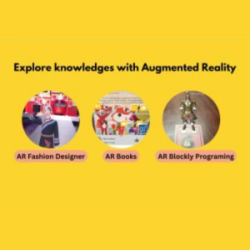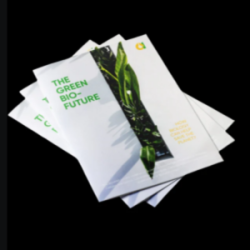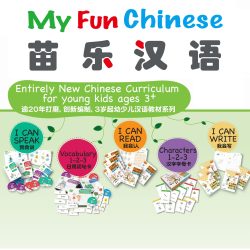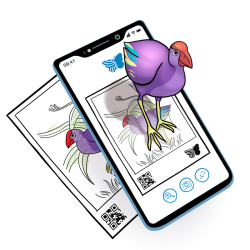Writing is more than putting words on a page — it is a way of thinking, exploring, and communicating ideas. In many classrooms, students see writing as a one-time task: begin, finish, submit. Yet research shows that when writing is taught as a process rather than a product, it becomes an active tool for learning, reflection, and creativity.
This article draws inspiration from Cambridge University Press, the Dartmouth Writing Program, and research by Sun and Feng, published by the Canadian Center of Science and Education (CCSE), all of which highlight that good writing grows from a well-supported process. Together, these sources remind educators that writing is not only about producing a final piece of work — it’s about developing a writer.
What Is Process Writing and Why It Matters
To understand process writing, it is helpful first to consider product writing — a more traditional approach in which students focus on the final written outcome, often working to reproduce model texts or perfect grammar and structure. By contrast, process writing places emphasis on the journey of composition: planning, drafting, revising, and improving one’s work through feedback and reflection.
Scholars have drawn several distinctions between these two approaches. James McCrimmon described it as the difference between writing as a way of knowing (process) and writing as a way of telling (product). Donald Murray defined it as revising for oneself versus revising for the reader, while Linda Flower framed it as the move from writer-based to reader-based prose. All these perspectives highlight that process writing helps learners become more deliberate, reflective communicators — skills that extend well beyond the classroom.
Research by Sun and Feng supports this view, emphasising that process writing encourages learners to actively engage with their own ideas, plan effectively, and improve through multiple drafts and feedback. The authors note that writing is a creative act which requires time, reflection, and interaction between the writer and the text.

The Five Stages of Process Writing (and Tips for Each)
1. Prewriting – Spark Creativity and Build Purpose
At this stage, students generate and organise ideas before writing begins. Encourage brainstorming activities such as mind mapping, drawing, or verbal discussions to help them connect ideas. For younger learners, sentence starters or visual prompts can help translate thoughts into words.
Tip: Give students choice when selecting topics. Ownership increases motivation and makes writing feel more authentic.
2. Drafting – Focus on Ideas, Not Perfection
Drafting is where ideas take shape. The goal here is flow, not flawlessness. Encourage students to write continuously without stopping to edit every sentence. This builds confidence and helps them see writing as a creative process.
Tip: Introduce free-writing sessions or use timers (for example, 10 minutes of uninterrupted writing) to help learners focus on getting ideas out rather than getting them right.
3. Revising – Rethink, Reorganise, Refine
Revision moves beyond surface changes. Students look critically at structure, clarity, and meaning — asking: Does my writing say what I want it to say?
Pair students for peer feedback to help them read their work through someone else’s eyes. Teach them how to give specific feedback on content and coherence, rather than simply grammar or punctuation.
Tip: Use colour-coded highlighters for different revision goals (for example, yellow for adding details, blue for improving transitions). This makes revision tangible and engaging.
4. Editing – Polish the Details
Once the content feels clear, students focus on grammar, punctuation, and spelling. For younger students, editing can be introduced as a detective stage — spotting clues and fixing errors. Provide simple checklists to help them self-correct before submitting.
Tip: Encourage students to read their work aloud. Hearing their own writing often helps them notice missing words or awkward phrasing they may miss when reading silently.
5. Publishing – Celebrate and Share
Publishing gives students an authentic reason to care about their work. Whether it is displaying writing on a classroom wall, compiling a class anthology, or posting to a shared digital space, public sharing builds pride and accountability.
Tip: Create author’s chair sessions where students present their writing to peers. Applauding effort as much as outcome reinforces the joy of expression.

Bringing It All Together
Process writing works best when adapted to your classroom context. Some learners benefit from more structure and guidance, while others thrive with greater independence — what Sun and Feng describe as the balance between maximal and minimal teacher control.
For process writing to be most effective, educators should encourage flexibility within this framework. Writing is not always a linear process; learners may revisit earlier stages, skip ahead, or return to previous drafts as their ideas evolve. By allowing this flexibility, teachers help students view writing as an ongoing, living process — one that fosters curiosity, persistence, and self-improvement.
Above all, explore and experiment. Use different prompts, collaborative techniques, and reflection exercises to see what engages your students most. As learners discover their own rhythm within the process, writing becomes less about getting it right and more about expressing something meaningful.
For a deeper exploration of these strategies and the theory behind process writing, see the original articles that inspired this piece: Top Tips for Process Writing (Cambridge University Press), Teaching Writing as a Process (Dartmouth Writing Program), and Process Approach to Teaching Writing in Different Teaching Models, published in English Language Teaching by the Canadian Center of Science and Education (CCSE).
Curriculum and Guides that may be of interest:
Get a special discount by quoting code AISLMALL during CHECKOUT.
3Education: StoryTellAR

StoryTellAR is an online and remote platform designed specifically to connect offline materials seamlessly with interactive digital content, using Computer Vision (Augmented Reality). With a user-friendly user interface, curators can use their mobile phone to associate audio recordings, videos and other digital interactions such as audio, AR video plane and URL to any artworks. The corresponding digital content customised by their very own creators will pop up, making the book seamless, personalised and effective.
AlGreen: E-book

AlGreen is at the forefront of developing microalgae technology for air purification and carbon capture, driving a sustainable future. AlGreen’s ebook introduces young learners to biology’s wonders and its role in sustainability. Covering cellular and plant biology, climate science, and future biotech like carbon capture and renewable energy, it inspires environmental stewardship and a passion for protecting our planet.
Beijing Mandarin: My Fun Chinese For PreK to Grade 4

Beijing Mandarin is a well-established Hong Kong-based Chinese language school renowned for its quality instructional publications and dedication to world-class Mandarin education since 1992. My Fun Chinese for PreK to Grade 4 was created to meet the needs of young Chinese language students. We drew on over 30 years of experience teaching the Chinese language to create and publish the My Fun Chinese learning resources.
NovaAcademy: Ready-to-Go Curriculum Sets

Novalearn Limited is an EdTech company transforming education by seamlessly integrating machine learning, studio-produced edutainment, and quality STEAM education aligned with international K-12 curricula. All the teaching resources you need for fun and enriching classes, created by the NovaLearn team of experienced educators and industry experts. Each curriculum set includes Project lesson plans, Engaging videos, Interactive activity sheets and Skill-building exercises.
Oxford University Press: Cambridge IGCSE/O Level/AS & A Level Exam Success Revision Guides

Oxford University Press is a department of the University of Oxford. It furthers the University’s objective of excellence in research, scholarship, and education by publishing worldwide. Cambridge Exam Success Guides from Oxford University Press provide unique exam support and revision guidance for Cambridge IGCSE & O Level and AS & A Level students. Matched to the latest Cambridge assessment criteria. Perfect for use alongside Oxford Resources for Cambridge Student Books or as a standalone resource for independent revision.
QuiverVision: Quiver Augmented Reality Coloring

QuiverVision is a one-stop shop for Augmented Reality content and lesson plans for Pre-K to Year 8 and beyond. We develop the software behind the world’s best Augmented Reality Colouring Experiences. Our premier app, “Quiver”, makes learning fun. Enhance learning with Quiver’s AR subscription for 10-500 devices. Students bring educational coloring pages to life via the Quiver app, creating interactive, engaging experiences. Includes school/home access and curriculum-aligned plans, fostering creativity, skills, and knowledge retention.
Special Learning - Trainings, curriculum, materials and resources for educators

Special Learning is dedicated to changing the lives of people with Autism and other special needs. The organisation provides an exceptional suite of educational solutions for ABA practitioners, educators, and parents. Through its leading-edge technology platforms, users can access educational products and services around the world without geographical limitations.









